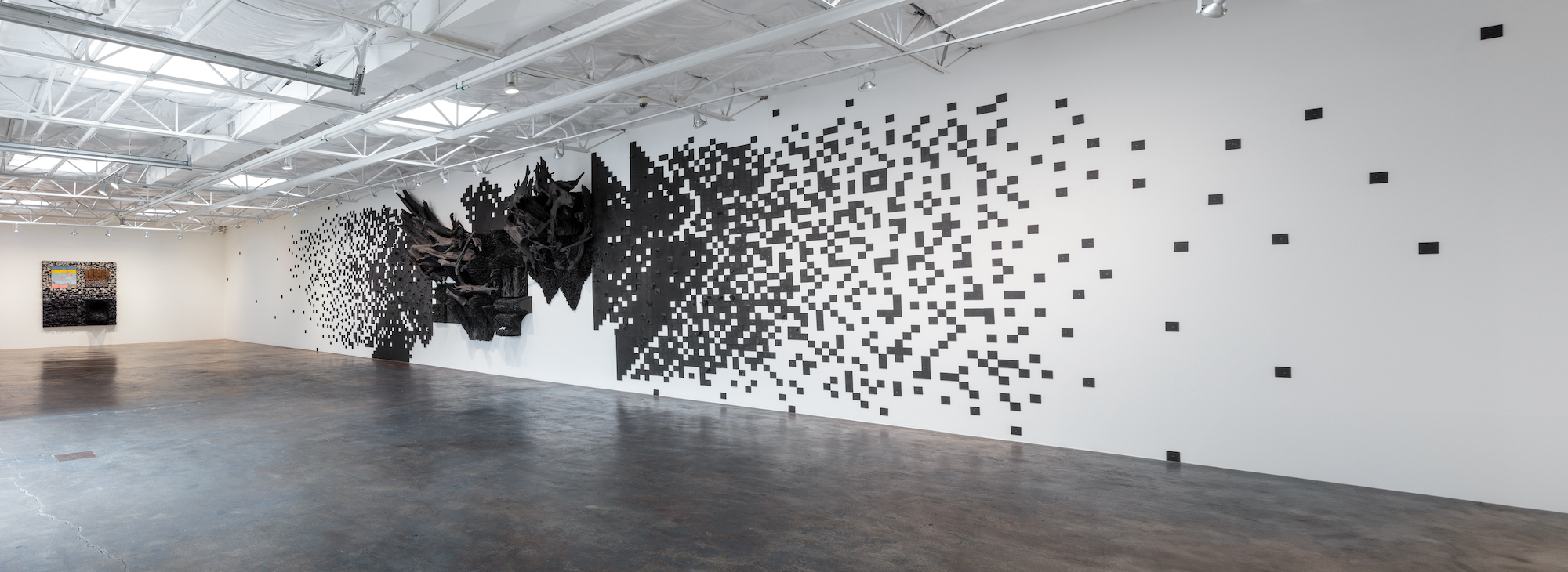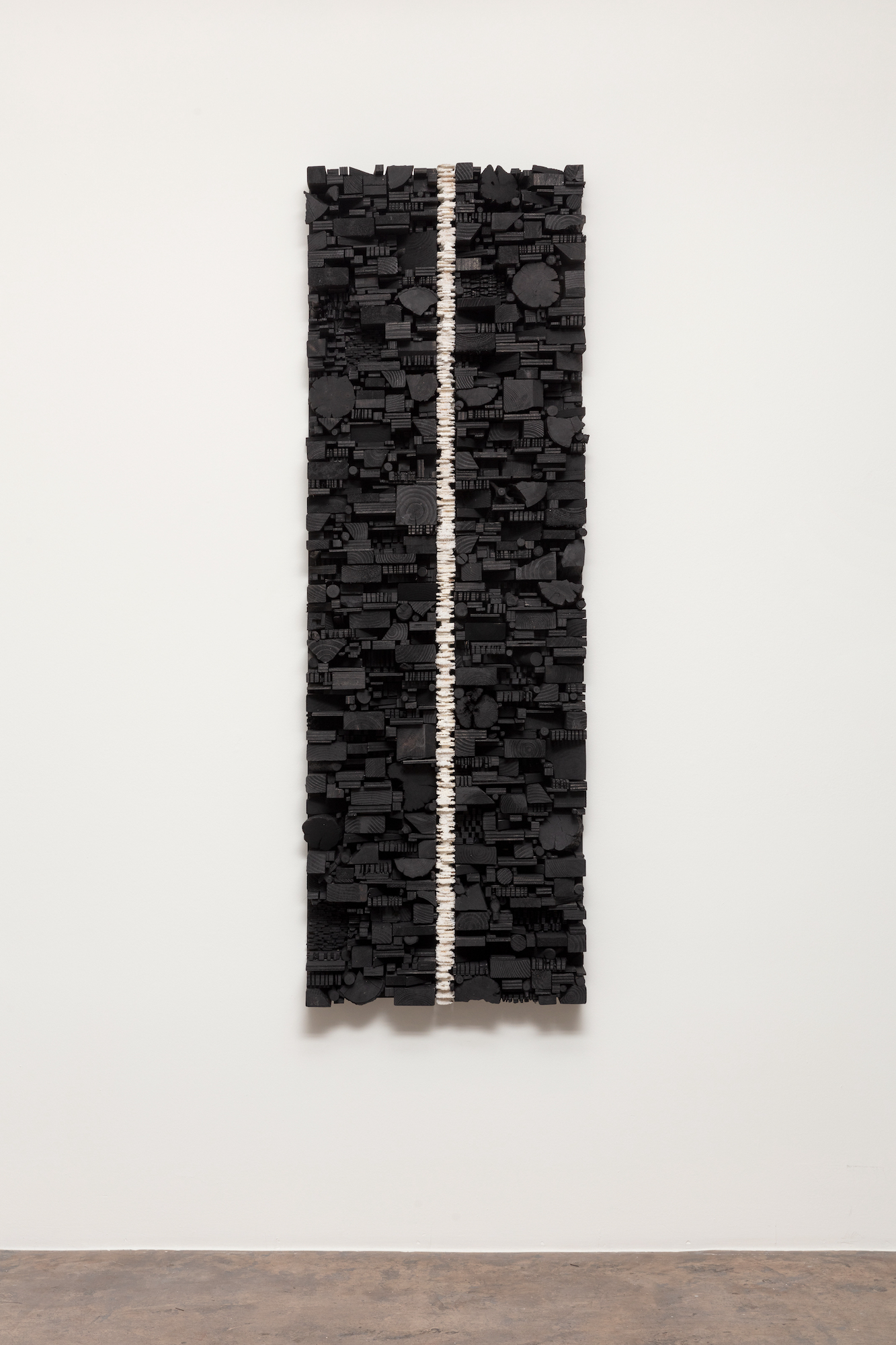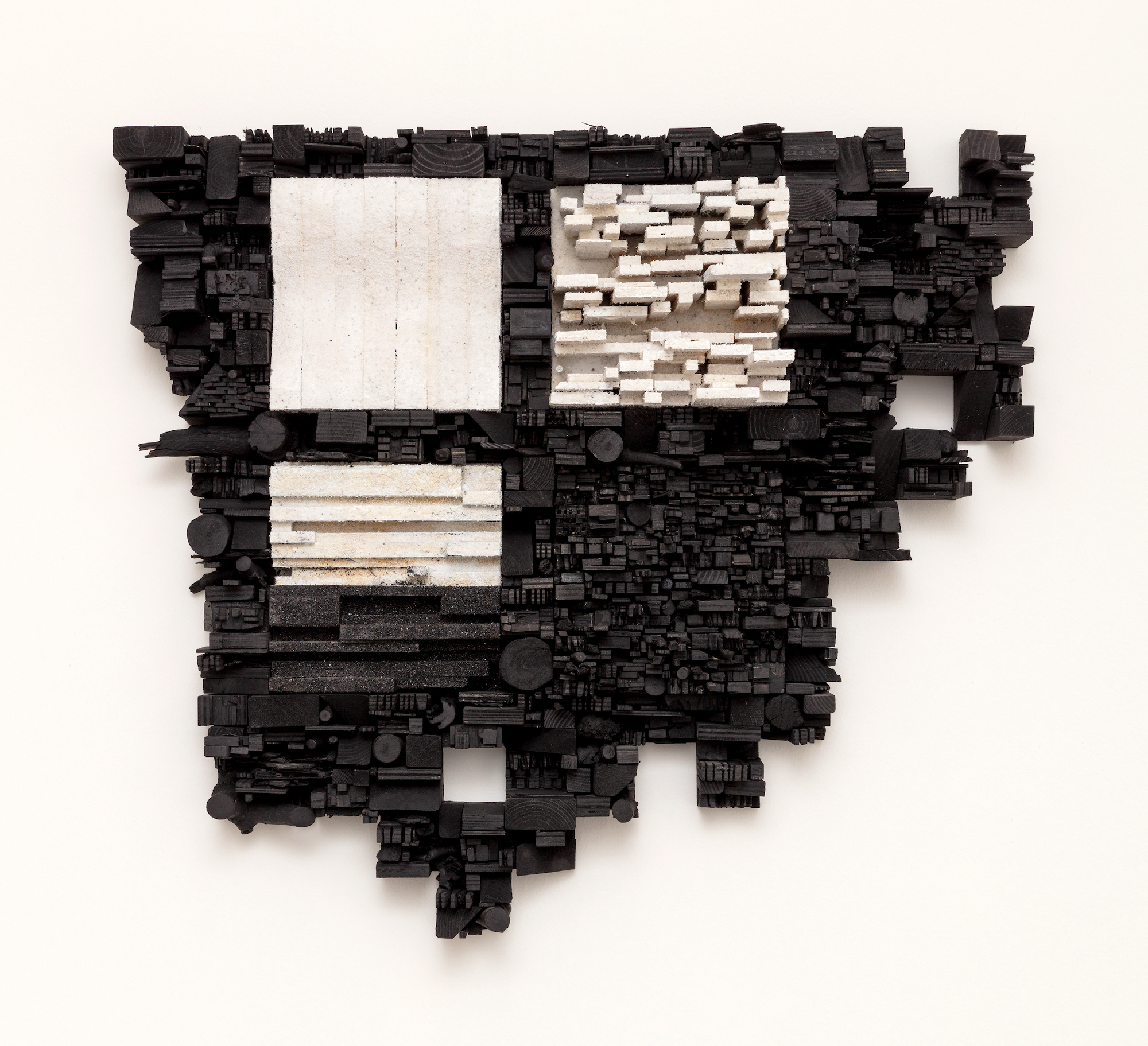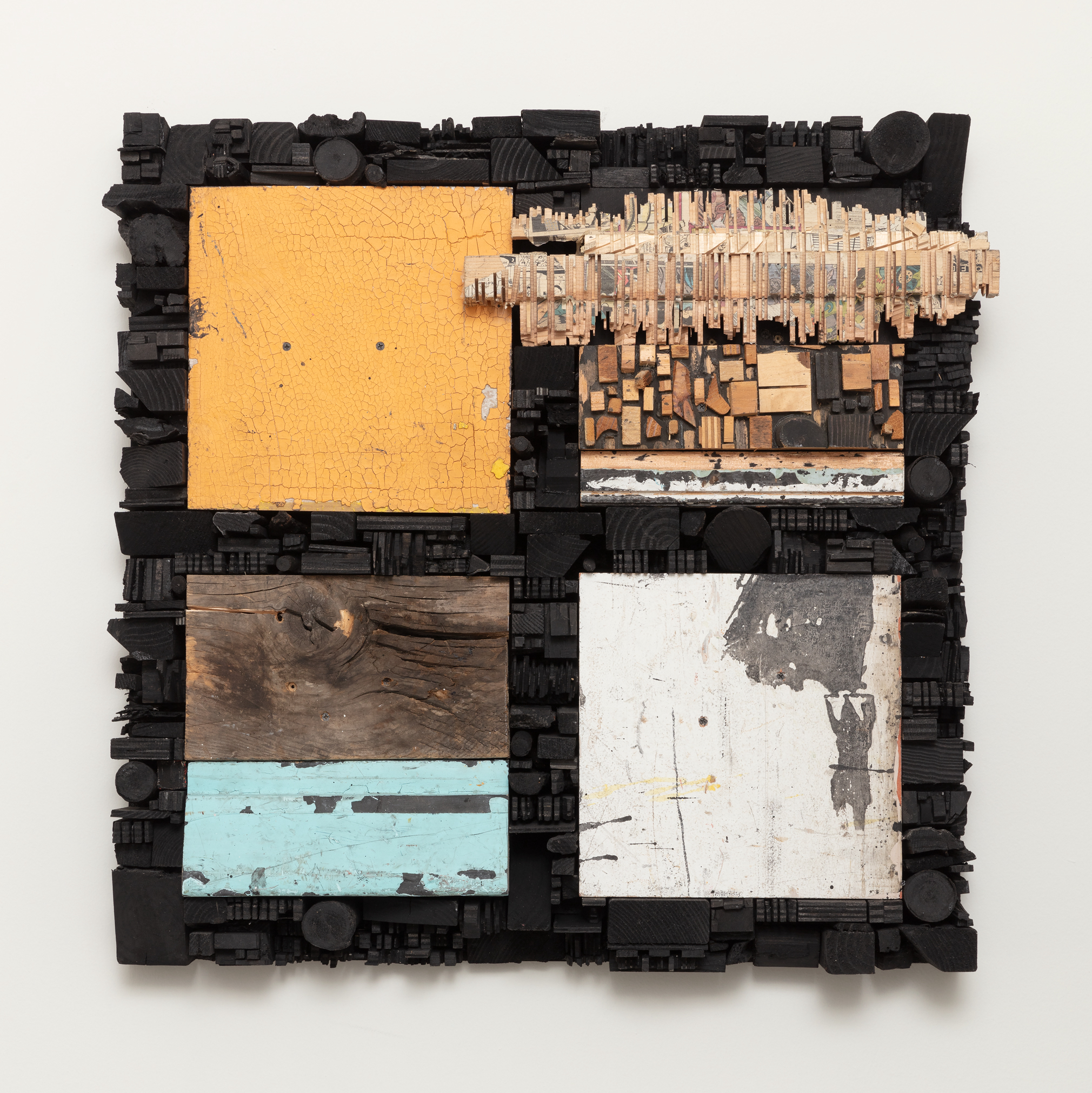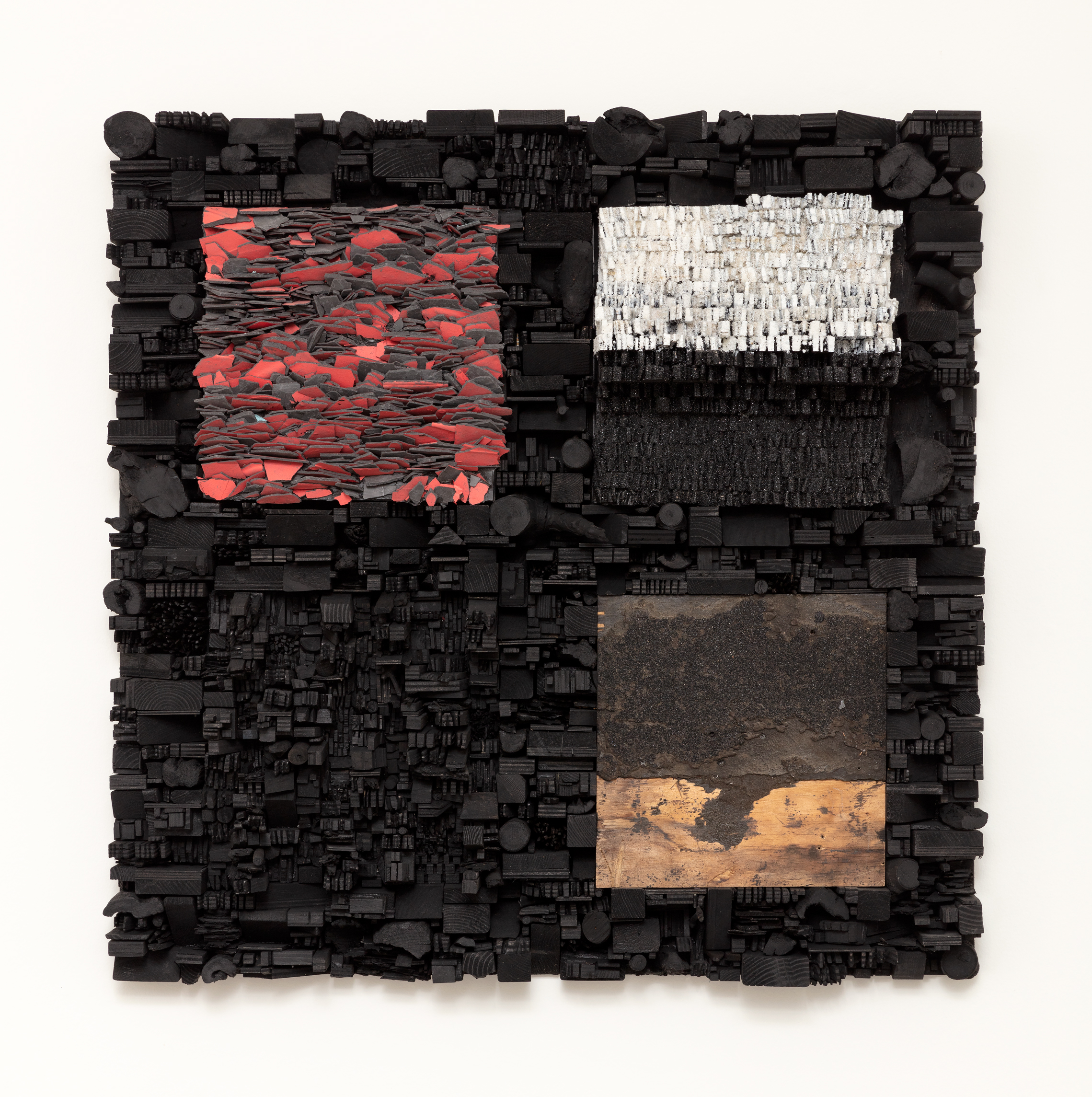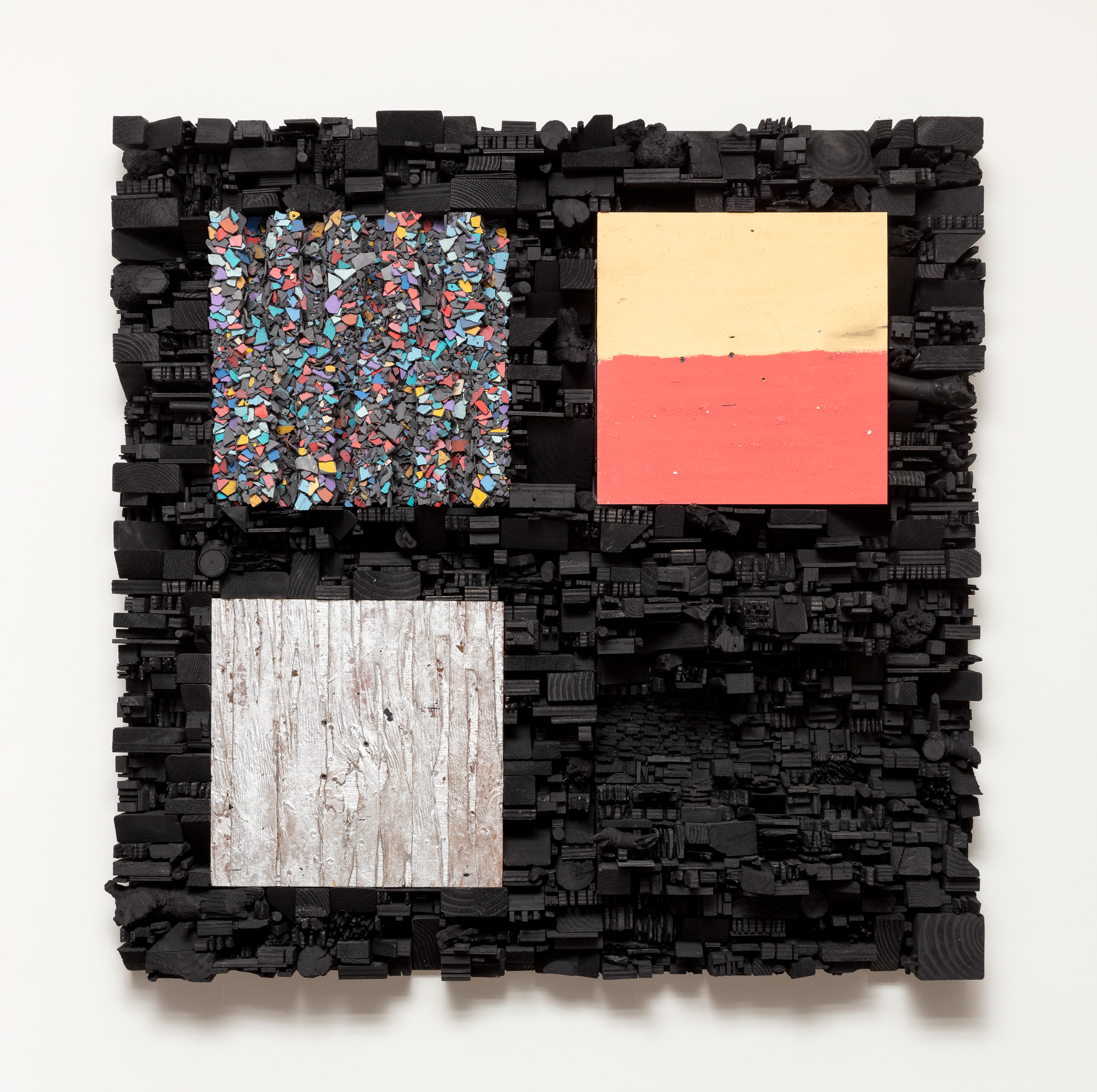Leonardo Drew
Talley Dunn Gallery
September 9 – December 9, 2023
Talley Dunn Gallery is proud to present Leonardo Drew, a solo exhibition of Leonardo Drew’s most recent wall-mounted sculptures, including a momentous site-specific installation which spans the entire length of the main gallery. Drew is known for his monumental assemblages containing thousands of intricately interconnected handmade components. The installation created for this exhibition, exceptional in both scale and ambition, marks the debut of a new style for the artist which he has termed “pixel installation.” Surpassing the structural constraints of his assemblages, Drew works directly on the wall, meticulously placing his signature black fragments of wood in a pixelated expanse that mesmerizingly consumes the gallery space. These pixel-like forms evoke screen-based technologies, a resonance heretofore nonexistent in Drew’s work and one that brings the organic and weathered nature of Drew’s materials into further relief. As our experience of the world is increasingly filtered through screens, especially in the wake of the pandemic, Drew’s captivating works give us pause to stand still and reflect.
This exhibition represents Drew’s latest experiments with the formal qualities of the grid—a form imbued with personal and art historical resonances that the artist has dynamically investigated over the course of his career. Taking inspiration both from his childhood experiences and the likes of Piet Mondrian, Leonardo Drew has utilized the form of the grid as the basis for his compositions. In the formal qualities of the grid, the artist evokes the repetitive, compact visual symmetry of housing projects from his upbringing in addition to art historical allusions to minimalism. The works on view represent an evolution from this method. In these works, the artist explores grids within grids. His signature use of wood flanks smaller gridded investigations ranging from chips of plaster to flat swaths of paint. Number 238T and Number 239T expand beyond the confines of the grid, sprawling out into organic shapes. Drew’s installation takes these formal inquiries to new heights as he sets off into a realm nearing the digital. The artist’s works project into our space, imbued with a dynamism that reflects the world around us in increasing depths.
Leonardo Drew is known for creating reflective abstract sculptural works that play upon the dystopic tension between order and chaos. Recalling Post Minimalist sculpture that alludes to America’s industrial past, as well as the plight of African Americans throughout U.S. history. One could find many meanings in his work, but ultimately the cyclical nature of life and decay can be seen in his grids of transformed raw material to resemble and articulate entropy and a visual erosion of time.
Drew’s natural talent and passion for art was recognized at an early age, first exhibiting his work at the age of 13. He went on to attend the Parsons School of Design and received his BFA from the Cooper Union for the Advancement of Science and art in 1985. His works have been shown nationally and internationally and are included in numerous public and private collections. Public institutions include the Metropolitan Museum of Art, New York; The Museum of Modern Art, New York, The Museum of Contemporary Art, Los Angeles The Hirshhorn Museum and Sculpture Garden, Washington DC; and Tate, London, among others, as well as collaborating with Merce Cunningham on the production of “Ground Level Overlay.” New York Times art critic Roberta Smith describes his large reliefs as “pocked, splintered, seemingly burned here, bristling there, unexpectedly delicate elsewhere. An endless catastrophe seen from above. The energies intimated in these works are beyond human control, bigger than all of us.” He currently lives and works in Brooklyn, New York.

